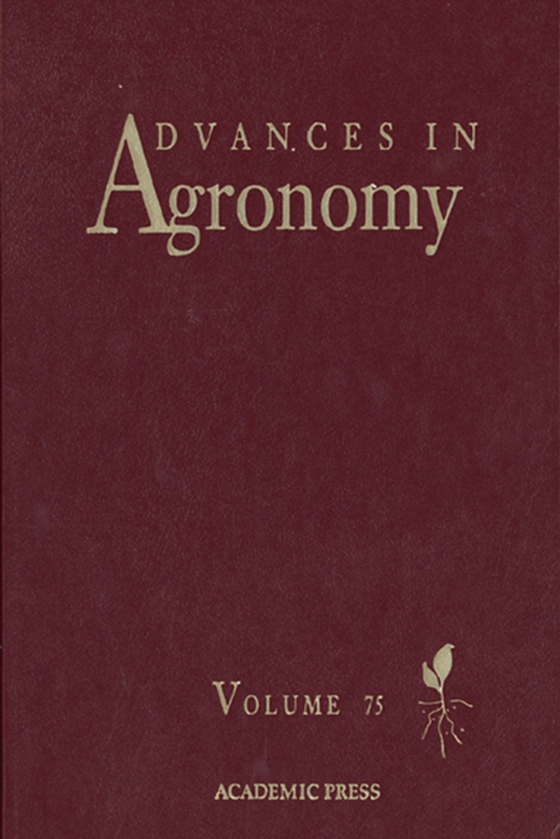
Advances in Agronomy e-bog
1313,81 DKK
(inkl. moms 1642,26 DKK)
Advances in Agronomy has the highest impact factor among serial publications in agriculture. The Science Citation Index, 1986, reports an impact factor over 2,459 and a cited half-life over 10 years. Volume 75 contains four outstanding reviews dealing with phytoremediation, issues related to water use in China, humic substances, and remote sensing. Chapter 1 is an extensive review on phytoreme...
E-bog
1313,81 DKK
Forlag
Academic Press
Udgivet
7 februar 2002
Længde
251 sider
Genrer
RBGB
Sprog
English
Format
pdf
Beskyttelse
LCP
ISBN
9780080490168
Advances in Agronomy has the highest impact factor among serial publications in agriculture. The Science Citation Index, 1986, reports an impact factor over 2,459 and a cited half-life over 10 years. Volume 75 contains four outstanding reviews dealing with phytoremediation, issues related to water use in China, humic substances, and remote sensing. Chapter 1 is an extensive review on phytoremediation of metals, metalloids, and radionuclides, including discussion on phytoextraction technologies, hyperaccumulator plants, chemically induced phytoextraction, and phytovolatilization. Chapter 2 covers the conservation and use of water in Chinese agriculture including engineering, economic, and agronomic aspects and considerations. Chapter 3 presents advances in understanding the structure of humic substances, particularly the concept of a supramolecular structure. Analytical and molecular scale evidence for this latter structure are presented as well as discussions on the role of humic superstructures in soils. Chapter 4 presents frontiers in quantitative remote sensing of soil properties including principles, methods, mechanisms, and limitations. Volume 75 contains four outstanding reviews dealing with phytoremediation, issues related to water use in China, humic substances, and remote sensing Chapter 1 is an extensive review on phytoremediation of metals, metalloids, and radionuclides, including discussion on phytoextraction technologies, hyperaccumulator plants, chemically induced phytoextraction, and phytovolatilization Chapter 2 covers the conservation and use of water in Chinese agriculture including engineering, economic, and agronomic aspects and considerations Chapter 3 presents advances in understanding the structure of humic substances, particularly the concept of a supramolecular structure. Analytical and molecular scale evidence for this latter structure are presented as well as discussions on the role of humic superstructures in soils Chapter 4 presents frontiers in quantitative remote sensing of soil properties including principles, methods, mechanisms, and limitations
 Dansk
Dansk

